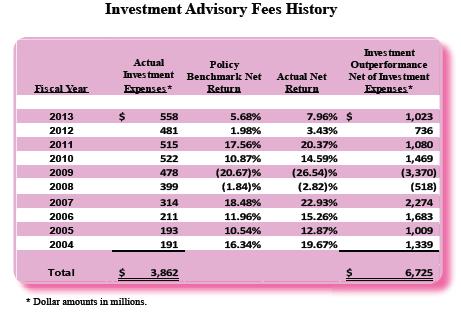Pension funds spend millions on investment fees, but PA taxpayers in the dark

By Eric Boehm | PA Independent
Taxpayers are largely in the dark when it comes to Pennsylvania’s pension funds’ riskiest investments.
With nearly $8 billion invested in hedge funds, the state’s two public pension funds are chasing the promise of high investment returns — a necessity since both systems hinge on an expectation of earning at least 7 percent annually on their $77 billion in investments.
FEES INCREASING: PSERS is spending more than ever before on investment fees as the pension system chases higher investment returns.
But those hedge funds carry not only risks for taxpayers, but also potentially expensive fees that have to be paid in both good times and bad.
On Thursday, Auditor General Eugene DePasquale called for changes in how the state’s pension systems choose investments and inform residents about potential risk and costs associated with those investments.
“Because of the risk often associated with hedge fund investments, it would be wise for PSERS, especially, to review the amount they have invested in such funds,” he said.
The Pennsylvania School Employees Retirement System and the State Employees Retirement System have more than $77 billion in investments between them. Of that total, PSERS has $5.7 billion invested in hedge funds; SERS has $1.9 billion invested in hedge funds, according to its most recent annual report.
That’s 12 percent and 7 percent of the two systems’ total investments, respectively.
DePasquale said the two systems should be more up-front about costs associated with those investments. For example, hedge fund managers typically earn 2 percent per year, plus a portion of the profits on their investments.
Each year, PSERS releases information detailing the investment manager fees paid by the system, which is posted online.
“Transparency is very important to PSERS and we take our fiduciary duty very seriously,” said Evelyn Tatkovski, spokeswoman for PSERS.
But that information is buried within a 133-page report PSERS draws up for the General Assembly each year. Even the most conscientious of lawmakers might have a hard time finding it.
For the record, PSERS spent more than $557 million on investment fees during the fiscal year that ended June 30, 2013. That’s well above the $191 million spent on such fees during the 2004 fiscal year.
It’s not just a Pennsylvania problem. Pension funds across the country have been chasing riskier investments in recent years in an effort to close the gaps created by years of inadequate funding and losses sustained during the 2008 economic downturn.
California’s largest public pension system announced earlier this year it would divest itself from high-risk hedge funds.
“While PSERS and SERS may publish information on the management fees, the information is incredibly difficult to locate and comprehend unless you are trained in the business of investments. These are public pension systems and the general public has a right to know where the money is going,” DePasquale said.







